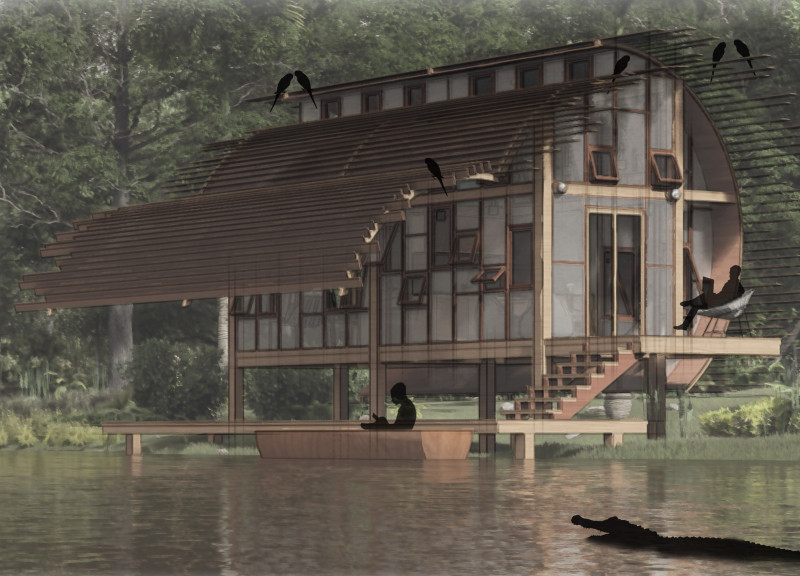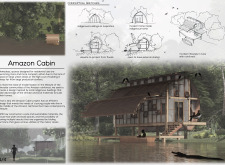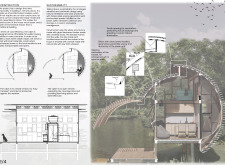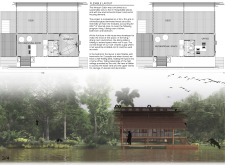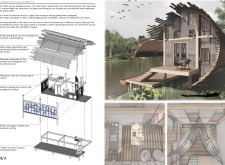5 key facts about this project
The Amazon Cabin is located in the diverse environment of the Amazon rainforest and serves as a residence for a young couple. The design focuses on modernizing their living experience while addressing ecological concerns and the specific needs of the area. Drawing inspiration from indigenous architecture, the cabin aims for a balance between contemporary comforts and the natural surroundings.
Design Concept
The concept centers on efficiency and adaptability, allowing for a modular structure that is easy to transport and assemble. This design minimizes disturbance to the natural environment and allows for quick construction. The layout takes into account the humid climate, ensuring that the house is comfortable and functional throughout the year.
Interior Spaces
The layout of the Amazon Cabin is compact, covering an area of 24 square meters. It includes a living area, kitchen, dining space, bathroom, and bedroom, all designed to overlap in their functions. This approach promotes a sense of openness and flexibility, often using foldable furniture to maximize the available space. The arrangement creates an inviting atmosphere that connects the occupants with the outside world.
Sustainability Features
Sustainability is a key focus in the cabin's design. Natural ventilation is achieved through zenith openings that enable airflow, reducing the dependence on air conditioning. Brises soleil are incorporated to provide shade, which helps keep the interior cool without the need for excess energy use. These features align with the overall goal of creating an eco-friendly living environment.
Materials and Environmental Integration
Glued laminated timber is chosen for its structural strength and warm appearance. The use of glass and mosquito netting enhances natural light and provides effective insect protection. The cabin also includes systems for rainwater collection as well as photovoltaic panels, allowing for energy independence.
A standout aspect of the design is the curved roof, which not only facilitates airflow but also adds a unique aesthetic touch. This element encourages a connection between indoor and outdoor spaces, enhancing the experience of living in the Amazon while respecting the vibrant natural landscape.


